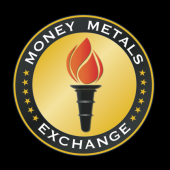As the economy heads into what looks like a recession, gold and silver markets are coming back.
Metals markets responded positively to the latest rate hike by the Federal Reserve. On Wednesday, the central bank raised its benchmark interest rate by another 75 basis points as expected.
Chairman Jerome Powell said the Fed could hike again at its next meeting depending on the economic data. Powell admitted that the economy is slowing but continued to insist it isn’t in recession.
In recent days, Treasury Secretary Janet Yellen and President Joe Biden have issued similar official denials.
But the latest GDP report suggests we have entered a recession. On Thursday, the first estimate of Q2 GDP came in at -0.9%. That was worse than the consensus forecast and represented the second consecutive quarter of declining GDP.
Two straight quarters of negative GDP is the textbook definition of a recession. But Biden administration officials are now trying to redefine the term.
Jerome Powell: "I do not think the US is currently in a recession."
President Biden: "Both Chairman Powell and many of the significant banking personnel and economists say we're not in a recession."
Janet Yellen: "A common definition of recession is two negative quarters of GDP growth or at least that's something that's been true in past recessions when we've seen that. What a recession means is a broad-based contraction in the economy. And even if that number is negative, we are not in a recession now."
President Biden: "That doesn't sound like a recession to me."
Joe Biden and his economic handlers claim that because job numbers remain relatively strong, they can wave away the fact that the overall economy is shrinking.
But the employment data is likely to deteriorate as businesses across the country announce hiring freezes due to rising costs, weakening sales, and recession fears.
Consumers are rapidly retrenching. After being artificially boosted by stimulus payments and low-interest financing, consumer discretionary spending is being crimped by higher costs for food and other necessities plus higher interest rates.
The sharpest pace of interest rate increases in 40 years risks inducing a negative wealth effect for millions of households. Another real estate crash could be around the corner amid higher mortgage rates and record housing affordability.
The Fed seems oblivious to what it has gotten itself into. It blundered by waiting too long to hike short-term rates under the false belief that inflation pressures would be transitory. It feels compelled to hike in much bigger increments than normal under the false belief that the economy remains strong enough to handle sharply higher rates.
Longer-term rates have already stopped rising, with short rates now the same or even higher than longer-term rates, another sign of economic trouble.
The mainstream financial media has finally picked up on the growing risks of a recession. Politicians, bureaucrats, and central bankers can try to change the definition of a recession to fit their agenda. But they can’t change the realities.
Lying about the economy will ultimately prove to be another failed strategy. Public trust in the Washington establishment is already at a low point. The American people will see through the officials' lies as their real-world experiences confirm what’s happening in the economy.
Investors brace for recession and should consider investing in what’s real. During an economic downturn, counterparty risks rise, and assets backed only by promises can implode.
Hard assets such as precious metals carry no counterparty risk when held in physical form outside the financial system.
Over time, gold and silver markets reflect the underlying realities of currency depreciation. Gold and silver prices tend to rise as the U.S. dollar loses value.
When Fed officials are forced to admit the economy isn’t strong enough to take any more rate hikes, the dollar can be expected to start sinking against other fiat currencies and sink even more rapidly against tangible goods.
The perception of a hawkish Fed had helped push the dollar up on foreign exchange markets through most of the year. But currency traders know central bankers can’t keep tightening through a recession. It’s only a matter of time before Jerome Powell and company begin pursuing monetary easing again.
The U.S. Dollar Index peaked two weeks ago. It may have a long way to fall as the economic downturn deepens. And precious metals markets may finally have a long-lasting rally.
